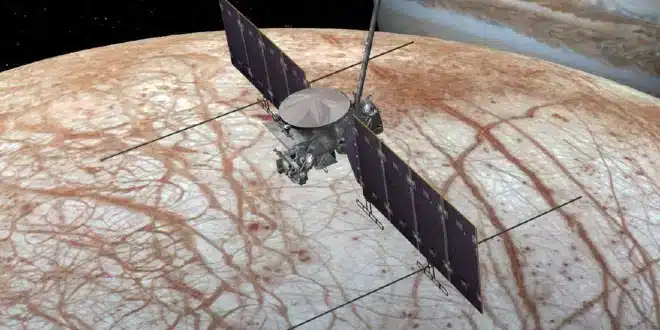NASA is gearing up to launch its spacecraft, Europa Clipper, on a mission to explore Jupiter and its moon, Europa, with the goal of discovering whether life could exist beyond Earth.
The Europa Clipper mission aims to investigate beneath the icy surface of Europa, where scientists suspect an ocean lies close to the surface. The spacecraft will not be directly searching for life but will instead focus on determining whether conditions on Europa could support life.
NASA anticipates needing a separate mission to directly search for microorganisms that might exist on Jupiter’s moon.
As Curt Niebur, the program’s lead scientist, explains, “This mission offers us a chance to explore not just a world that may have been habitable billions of years ago, but one that could be habitable today — right now.”
Key Details About Europa Clipper
Europa Clipper will be NASA’s largest spacecraft built to study another planet. It will take five and a half years to reach Jupiter, passing within 16 miles of Europa’s surface. The spacecraft is scheduled to launch this month aboard SpaceX’s Falcon Heavy rocket from the Kennedy Space Center, with a mission cost of approximately $5.2 billion.
Given the distance from the Sun, Europa Clipper is equipped with large solar panels to generate power. The spacecraft’s journey will span 1.8 billion miles (3 billion kilometers), flying past Mars early next year and by Earth in late 2026. Upon its arrival at Jupiter in 2030, it will make 49 flybys of Europa.
The mission is expected to conclude in 2034 when the spacecraft will crash into Ganymede, Jupiter’s largest moon and the largest in the solar system.
What Kind of Life Could Exist on Europa?
Europa, one of Jupiter’s 95 known moons, is similar in size to Earth’s moon and is covered by an ice sheet estimated to be 10 to 15 miles thick (15 to 24 kilometers). Scientists believe that beneath this ice lies an ocean, potentially 80 miles (120 kilometers) deep.
Researchers also speculate that thermal vents might exist on Europa’s ocean floor, which could support life. However, as Deputy Project Scientist Bonnie Buratti noted, “We won’t know from this mission because we can’t see that deep.”


